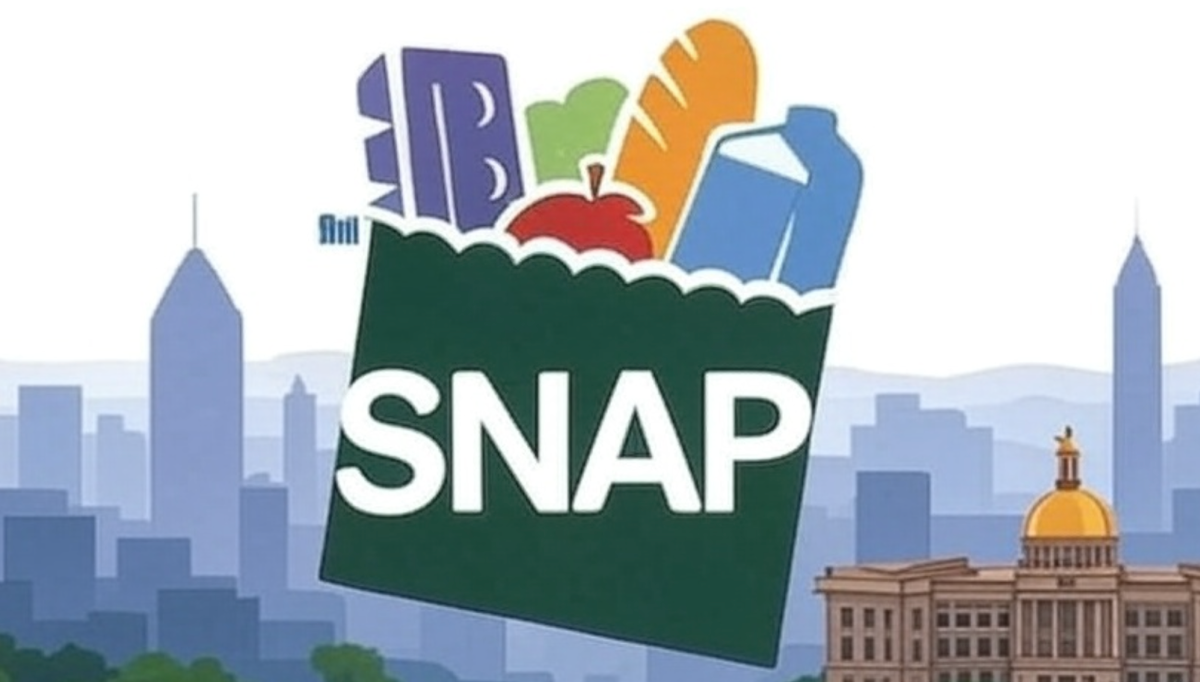As Metro Atlanta continues its rapid growth, painting a picture of economic vitality with new high-rises dotting the skyline and tech jobs booming in Midtown, a quieter crisis simmers beneath the surface: food insecurity.
New analysis of federal data shows that in the region’s five core counties—Fulton, DeKalb, Gwinnett, Cobb, and Clayton—tens of thousands of residents rely on the Supplemental Nutrition Assistance Program (SNAP), formerly known as food stamps, to put meals on the table.
How Many Metro Atlanta Residents May Lose SNAP Benefits if Shutdown Persists?
Approximately 700,000 metro Atlanta residents could face the loss of their SNAP benefits if the federal government shutdown persists beyond October 2025.
This estimate is based on the region’s 29-county population of roughly 6.35 million and a SNAP participation rate of 11% in Georgia’s metro areas, which aligns with recent state data showing lower urban reliance compared to rural counties (17%).
For context, Georgia’s statewide total stands at about 1.4 million recipients, or 12.6% of the population, with metro Atlanta accounting for over half due to its size.
These counties, home to more than 3.9 million people, represent the beating heart of the Atlanta metro area, yet SNAP participation rates vary starkly, from under 8% in affluent Cobb County to a staggering 24% in Clayton County.
The figures, drawn from the U.S. Census Bureau’s 2022 Small Area Income and Poverty Estimates (the most recent comprehensive county-level data available), underscore persistent inequities in access to nutritious food.
In Fulton County, which encompasses most of the city of Atlanta, 160,940 residents—about 14.8% of the population—received SNAP benefits that year.
DeKalb County, just east of the city, saw even higher usage at 16.4%, with 127,335 participants amid a population of 775,022.
Gwinnett County’s rate stood at 9.6% (94,116 recipients out of 983,702 residents), reflecting its diverse immigrant communities and suburban sprawl.
Further north, Cobb County’s lower 8.0% participation (62,007 out of 779,249) highlights relative economic stability in areas like Marietta and Smyrna.
But in Clayton County, south of the city, the story is dire: 24.3% of its 302,285 residents—73,512 people—depended on SNAP, a rate more than double the state average of 12.6% for fiscal year 2024.
How Many Metro Atlanta Residents Receive SNAP Benefits?
Across these five counties, an estimated 518,000 residents turned to the program in 2022, a lifeline amid rising grocery prices and stagnant wages.
| County | 2022 Population | SNAP Recipients (2022) | Participation Rate |
|---|---|---|---|
| Fulton | 1,087,170 | 160,940 | 14.8% |
| DeKalb | 775,022 | 127,335 | 16.4% |
| Gwinnett | 983,702 | 94,116 | 9.6% |
| Cobb | 779,249 | 62,007 | 8.0% |
| Clayton | 302,285 | 73,512 | 24.3% |
These numbers — compiled from the U.S. Census Bureau via Federal Reserve Bank of St. Louis (FRED — aren’t just statistics, they’re families skipping meals, children facing hunger in school cafeterias, and seniors choosing between medicine and groceries.
Georgia’s overall food insecurity rate hovers at 14.9%, affecting 1 in 7 residents, but in the Atlanta Community Food Bank’s 29-county service area, it’s slightly lower at 12.8%—or 1 in 8 people.
Yet recent reports paint a worsening picture. Feeding America’s 2025 “Map the Meal Gap” study reveals food insecurity rising statewide, with 1 in 5 children and 1 in 10 seniors now at risk.
The Atlanta Food Bank has seen a 60% surge in demand for emergency meals over the past three years, driven by inflation, housing costs, and the end of pandemic-era expansions to SNAP and other aid programs.
Looking ahead, experts project a troubling trajectory for the Atlanta area. If current trends hold—marked by persistent inflation in food prices (up 25% since 2019) and uneven job recovery—food insecurity could climb to 15-17% across the metro region by 2027.
In high-participation counties like Clayton and DeKalb, rates might approach 25-30%, exacerbating health disparities such as higher rates of diabetes and obesity already prevalent in underserved Black and Brown communities.
When Will SNAP Benefits Stop Nationwide?
The ongoing federal government shutdown, now in its second week, threatens to halt SNAP benefit issuance starting November 1, potentially leaving 1.4 million Georgians—including 640,000 children—without support for weeks.
This could spike emergency food pantry visits by another 20-30%, straining local resources.But amid the challenges, solutions are within reach. Local leaders and organizations are rallying with a mix of immediate relief and long-term strategies.
Expanding access to SNAP through streamlined enrollment and outreach—particularly in linguistically diverse Gwinnett—could reach thousands more eligible families, as only about 80% of those who qualify currently participate statewide.
Community-driven initiatives, like the Atlanta Community Food Bank’s partnerships with urban farms and mobile pantries, have already distributed millions of meals, but scaling these with corporate donations and volunteer drives is key.
Atlanta’s recent $2.5 million investment in fresh food access projects, including new markets in food deserts, shows promise for sustainable change.
Programs like Wholesome Wave’s incentives for buying Georgia-grown produce at farmers’ markets empower low-income shoppers to afford healthier options, while food rescue groups such as Second Helpings Atlanta and Rescuing Leftover Cuisine redistribute surplus from restaurants and grocers, cutting waste and hunger in one stroke.
On the policy front, advocates call for a living wage ordinance in Atlanta and state-level expansions to the Emergency Food Assistance Program (TEFAP), which supplements diets for the elderly and low-income families.
“SNAP is a critical lifeline for 1.4 million Georgians, including more than 640,000 children,” said Ife Finch Floyd, director of economic justice at the Georgia Budget and Policy Institute.”
As the shutdown drags on and winter approaches, Metro Atlanta’s leaders must act swiftly. Residents can support by volunteering with Hands On Atlanta’s “Hands on Hunger” program or donating to local pantries.
Final Word
For those in need, SNAP applications remain open via Georgia’s Division of Family & Children Services at dfcs.georgia.gov/snap.
In a city known for its resilience, turning the tide on hunger starts with collective will. The data demands it; our neighbors deserve it. Tips? Contact us at tjohnson@atlantafi.com.
More groceries stores are pivoting to curbside pickup, but many still haven’t made the switch (Looking at you, Trader Joe’s). AtlantaFi.com will keep you up to date on other stores at offer curbside pickup and more ways to keep you safe.
Want to save money on groceries and cut your bill in half? Of course, you do.




